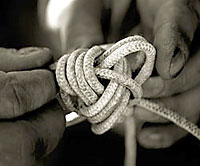
Lesson 6
Final Unit Project
- Time Required: 1 week
- Curriculum Fits: History and, depending on project choice, English/Language Arts, Technology, Music, Drama, Visual Arts
Lesson Overview
Working together in groups, students will create a final project that pulls together their research and knowledge of what it means to communicate in 1850 and 2010. They will synthesize what they know of the challenges to communicating, technology, style of language, education level of the writers, and the content of that communication, representing their learning in one of a variety of project types.
Learning Objectives
Through their final projects, students will demonstrate that they have:
- developed a knowledge and understanding of what it means to communicate long distance in 1850 and 2010.
- gained understanding of contextual information concerning the two time periods.
Through their final projects students will also demonstrate the ability to:
- provide information about long distance communication in 1850 and 2010.
- discuss and write about the following for each time period: what people might have written about, what education level writers might have had, what style of language might have been used and what challenges faced individuals when trying to communicate long distance.
- synthesize research information to create a holistic picture of long distance communication in 1850 and 2010.
Materials
- may vary widely depending on project choices
student worksheet: Project Choices (description and expectations)
student worksheet: assessment rubrics:
Procedure
- Explain to the students that they will have an opportunity to
create a final project within their research group. Each group
will complete one project and which will be due in one week. Projects
will be selected from the following list:
- write a traditional essay
- create a PowerPoint presentation or movie/video
- write a musical composition/song
- write and perform a play
- create a piece visual art
- Review the expectations for each project and once the groups have made their selection, hand out a copy of the specific project rubric that will be used to assess their work.
- When the projects are completed, provide an opportunity to groups to share with one another and/or a wider audience.
Assessment
Complete the Assessment Rubric for each project: